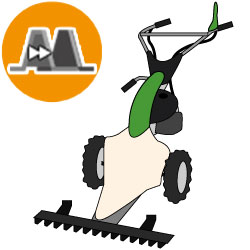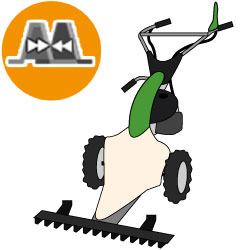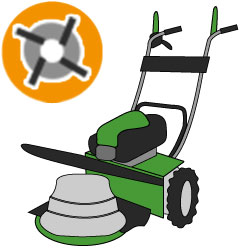A comprehensive guide to purchasing motor scythes, machines suitable for mowing tall and wild grass.
The guide to choose the Best Scythe Mowers, Completed and Edited by real experts in mowing tall or wild grass.
Petrol scythe mowers is a machine suitable for mowing tall, spontaneous grass, which allows you to keep your plot of land neat and tidy; it also provides the operator with the possibility of collecting the freshly cut grass and reusing it for feeding farmyard animals.
The various models are subdivided according to the different movement of the cutting blades:
Standard blade action scythe mowers are equipped with a double blade which performs a single-blade movement: only the upper blade performs the cut of the grass.
In scythe mowers with dual-blade action both blades perform the cut with opposing motion; this is the most efficient and versatile category of the scythe mowers.
Rotary scythe mowers feature a cutting system with a rotating disc and blades that rotate on their own axis, retracting in the event of accidental impact.
CONTENTS
1. Sickle bars
Scythe mowers’ sickle bars are fitted in the front part of the machine and work closely to the ground.
This system allows grass stalks to be cut at the bottom, keeping them intact even after passing through with the machine. Precisely due to this particular feature, scythe mowers are very often used for mowing fodder to feed livestock and garden animals, as well as tall, weedy grass.
Sickle bars are often tilting: they are able to perform side movements and adapt to the soil, thus making it possible to cut grass on any type of terrain, even irregular and bumpy ones.
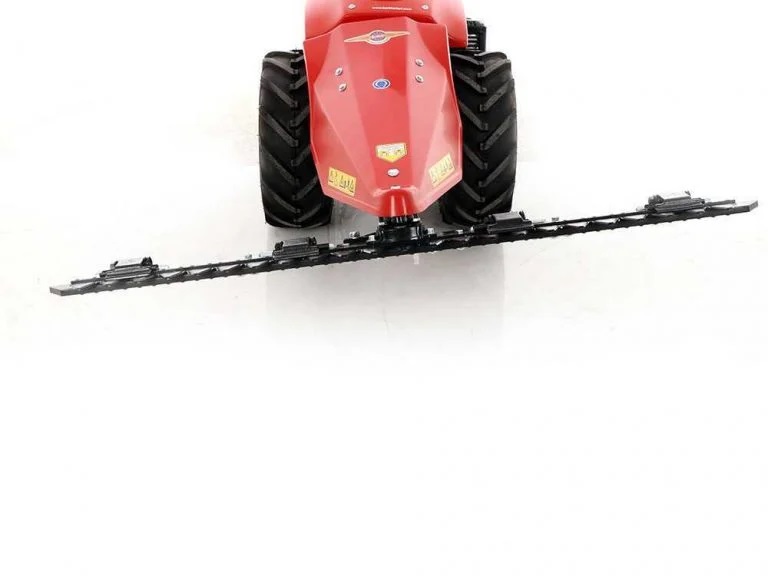

2. Standard blade action scythe mowers
Standard blade action scythe mowers provide excellent cutting efficiency thanks to its cutting apparatus and composition.
The sickle bar is composed by a lower blade and a upper blade. The second one performs an oscillating motion and comes into contact with the lower blade, which instead is a fixed one and functions as a counter blade.
It is driven by the mechanical transmission and through this opposing movement of the two blades, the machine cuts the grass.

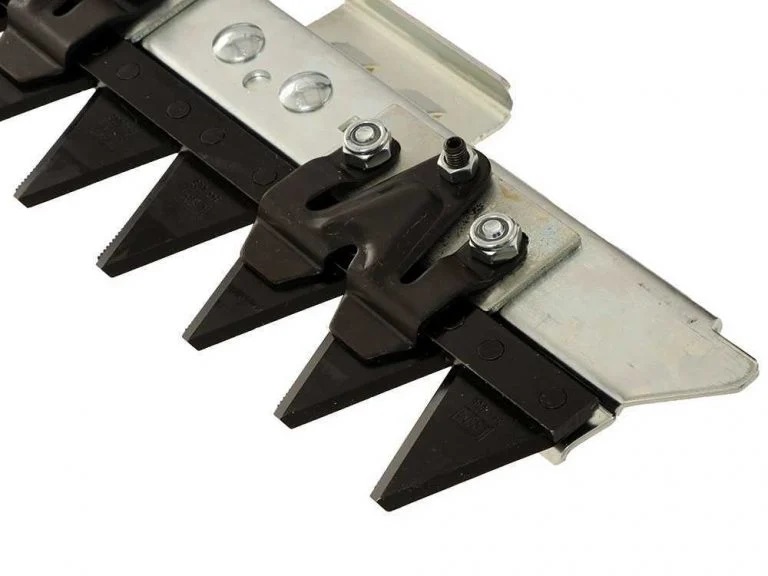
3. Scythe mowers with dual-blade action
This category of scythe mower is the most performing thanks to its cutting system. This consist of a sickle bar with a lower and an upper blade, where unlike single-blade models, both move against each other.
This feature implies efficient cutting and the total absence of vibration during cutting, for more comfortable working.
These scythe mowers are particularly suitable for mowing tall, uncultivated grass, and are also the most suitable for cutting vegetation to be recovered and then used for livestock feed, as they can cut even the lowest grass.


4. Rotary scythe mowers
Rotary scythe mowers, also known as rotary mowers, feature a cutting system consisting of a rotating disc with small blades that rotate on their own axis and retract in case of impact.
The cutting system is very similar to that of heavy-duty tractor-mounted rotary mowers.
Representing the most advanced cutting system on the market, they are able to move easily over any surface and work with any consistency of grass, thick or thin.

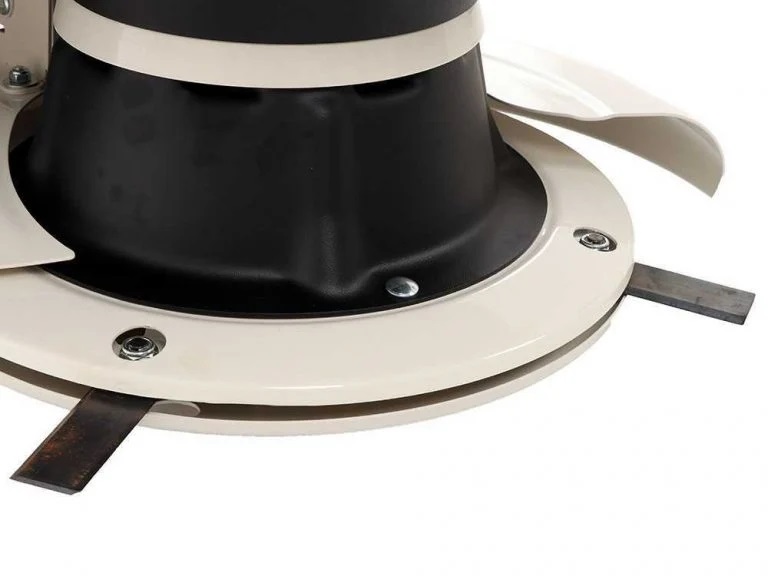
5. Multifunctional scythe mowers with standard action
All three categories listed above include machines that can also be multi-functional.
These models are characterised by the ability to support the application of several additional accessories that can be purchased separately.
The front of the machine, where the cutting apparatus is located, can be conveniently replaced by additional parts thanks to a quick coupling that allows the various accessories to be fitted and removed very quickly.
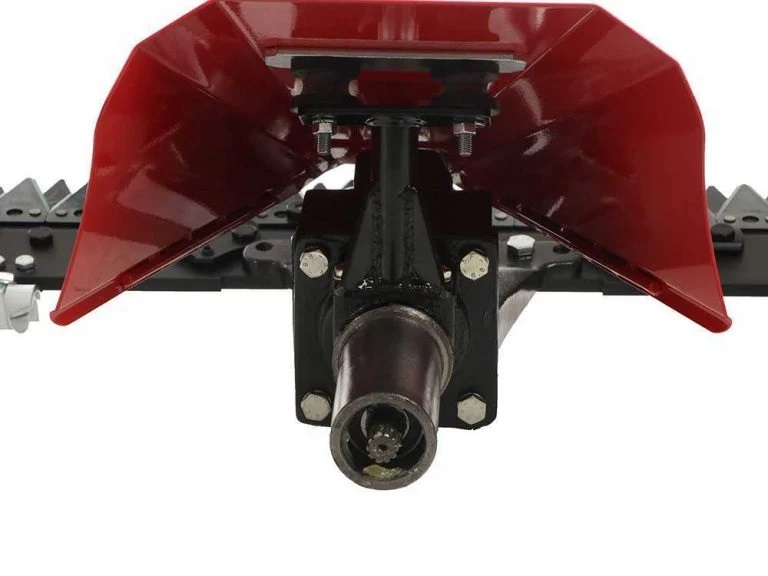

Thanks to the several accessories that can be fitted, the machines can perform many other functions, such as:
- Rough cut mower with hammer flails;
- Power sweeper brush unit;
- Flail mower;
- Snow blowers
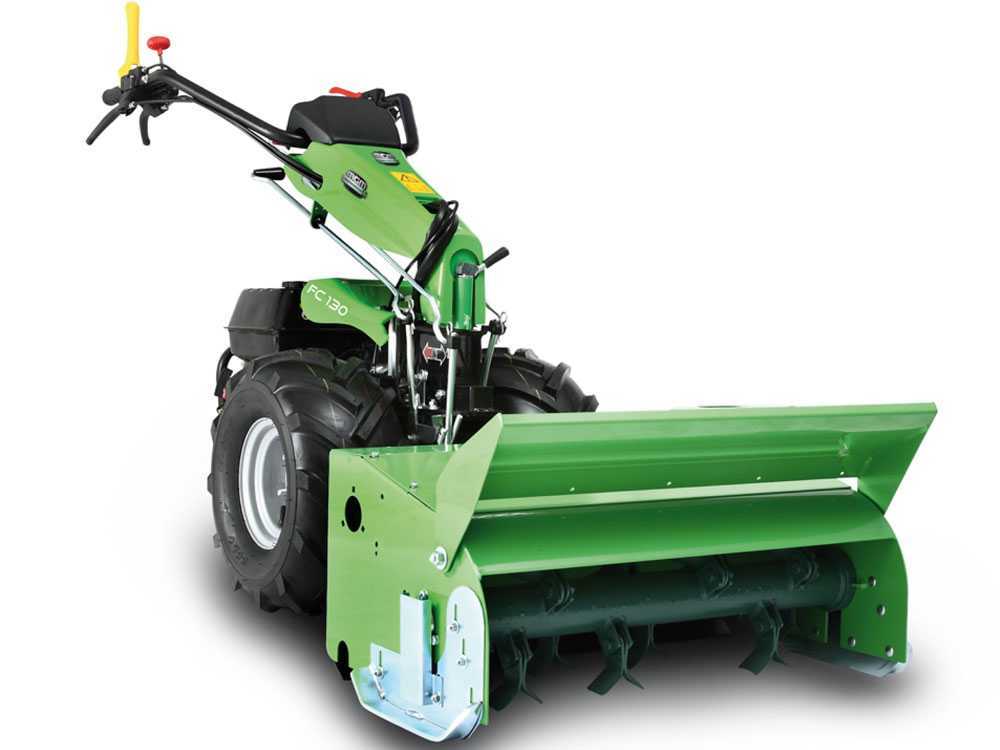
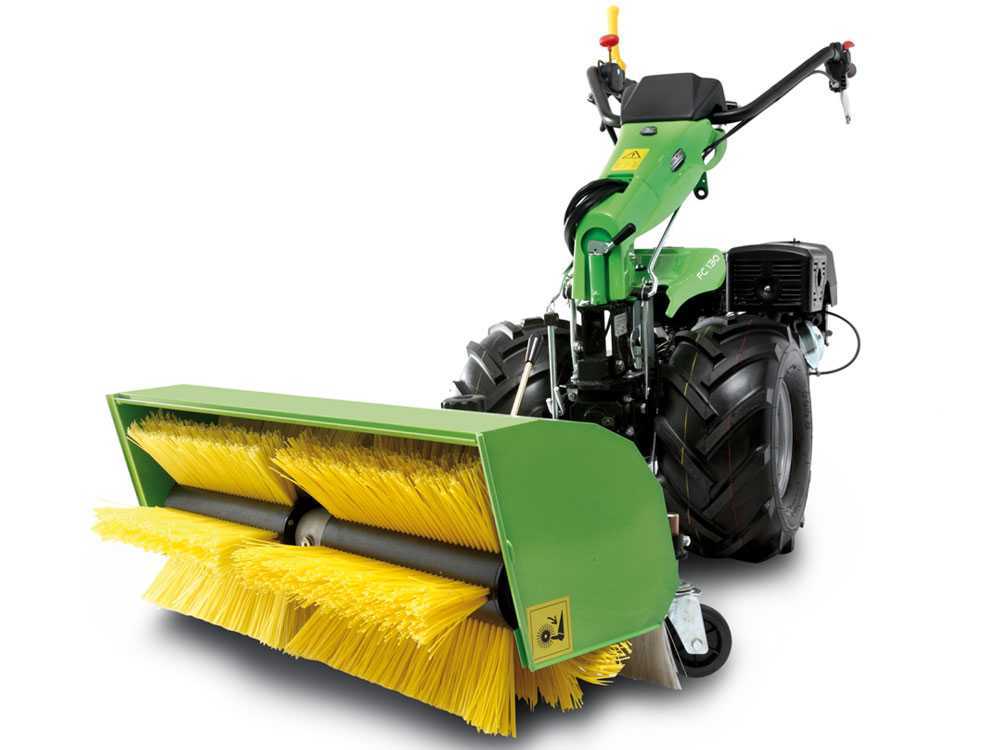
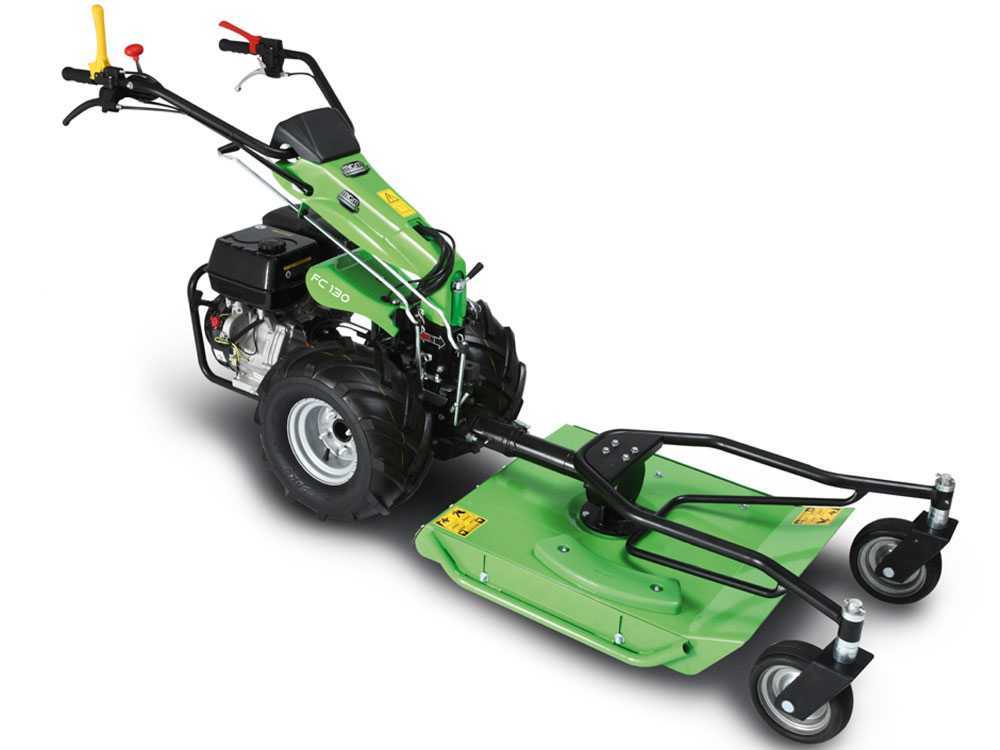
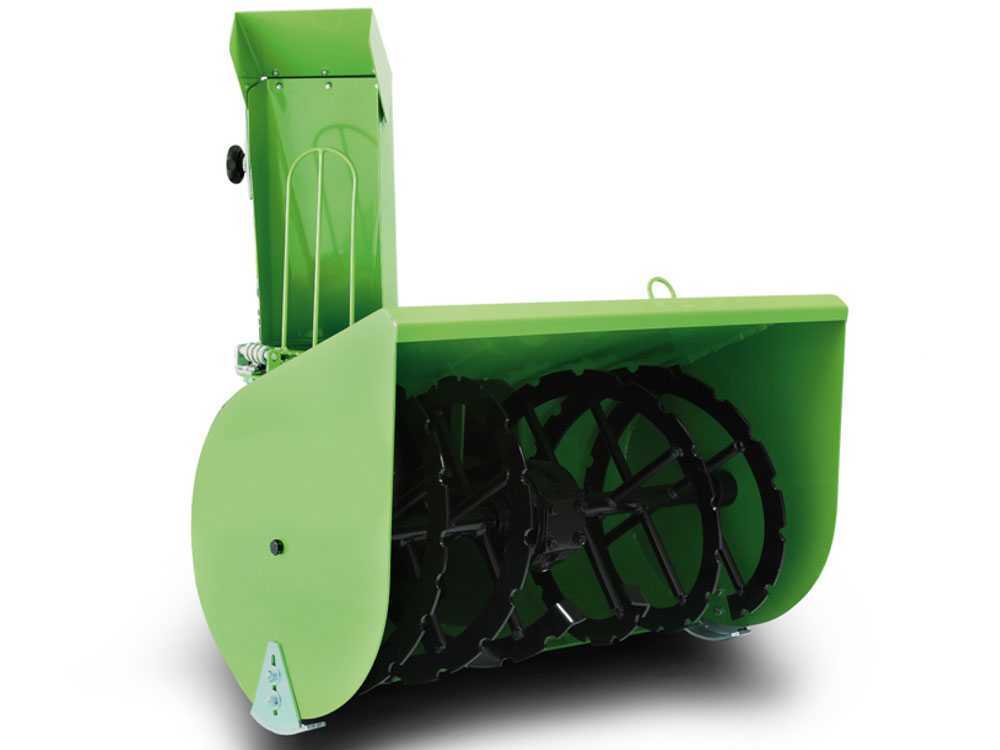
6. Gears and gearbox
The most common gearbox type for scythe mowers is the oil-bath gearbox, which is the sturdiest and most durable.
However, in the cheaper models we can also find other types of transmission, such as the oil-bath worm gear. These are less expensive variants that still manage to provide the machine with excellent performance.
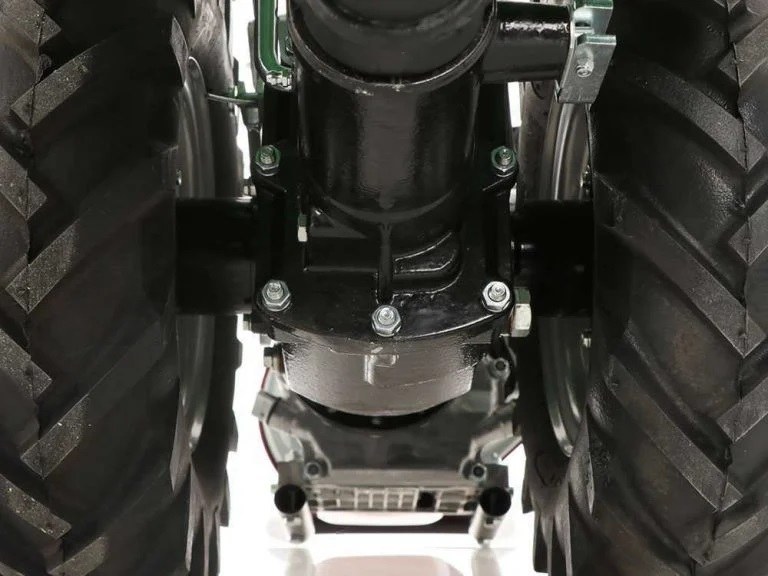
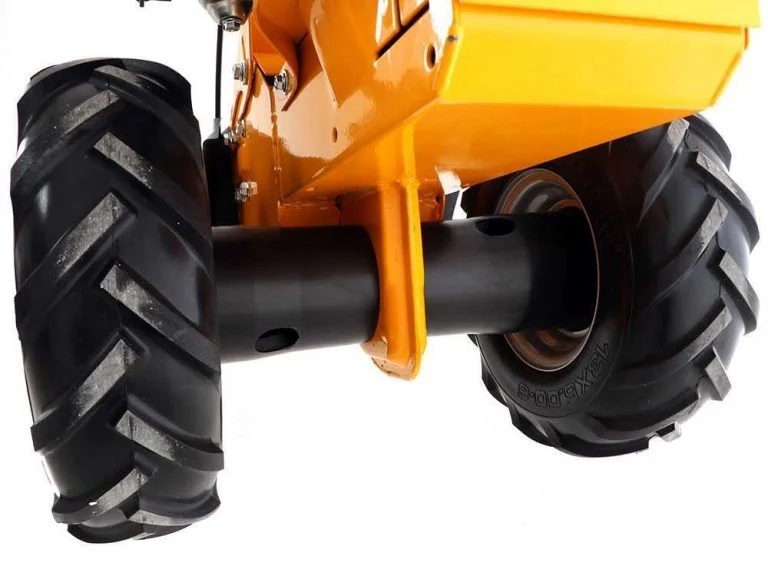
The machines can be equipped with different speed gears to best adapt to any type of processing.
The gears number can vary into:
- Single-gear;
- 1+1 gears;
- 2+2 gears;
- 3 gears;
- 3+2 gears;
- 3+3 gears;
- 4+3 gears;
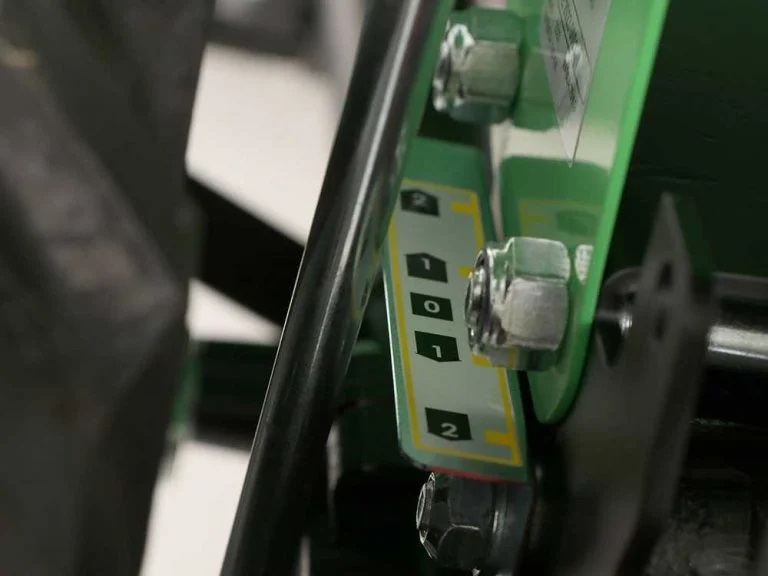
The gears number show the possibility to vary the speed during operations.
We can also draw up a ranking of the gears on scythe mowers according to their level of work.
On scythe mowers for hobby use, only single-gear, or at best 1+1 gears can be found; on mowers for semi-professional use, 3-speed, 2+2 or 3+2 gears can be found, while on those for professional use, 3+3 and 4+3 gears can also be found.
| Hobby use | Semi-professional use | Professional use | |
| Number of gears | Single-gear / 1+1 | 2+2 / 3+2 | 3+3 / 4+3 |
6.1 Belt drive
The final belt drive is placed between the cutter bar and the central transmission and is protected by a special protective casing.
It performs the clutch function by slipping when the blade is accidentally hit, preventing the most delicate components of the scythe mower from breaking.
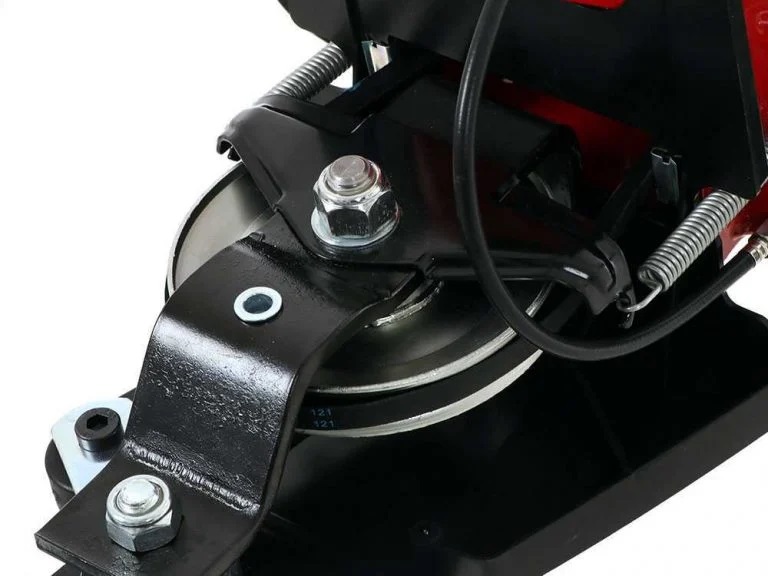
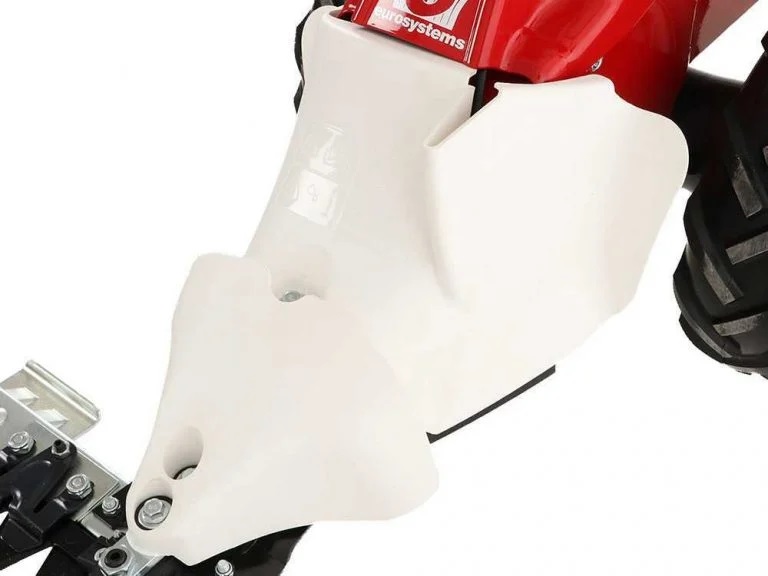
6.2 Oil-bath drive

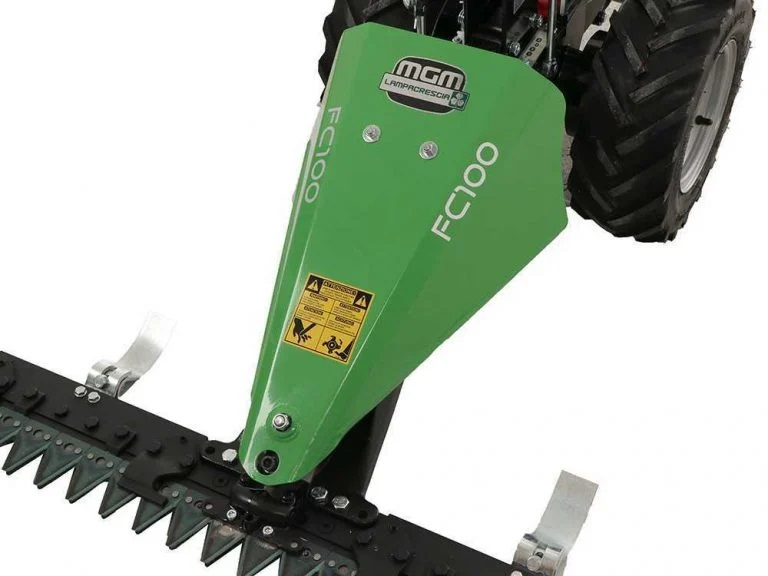
The oil-bath gear transmission is the most expensive and durable solution that can be fitted to a petrol scythe mower.
It is always placed at the front side of the machine, under a protective carter, and consists of a rotor with a rotary motion, which, connected to the cutter bar, allows it to be driven and moved for cutting.
7. Cutting width and power
The scythe mower cutting width indicates the width of ground that the machine is able to cover in a single pass.
Less performing machines for hobby use can feature a cutting width ranging from 57 to 85 cm. Machines of semi-professional use can range from 65 cm up to 100 cm, while the most professional ones can reach up to 110 cm cutting width.
| Hobby use | Semi-professional use | Professional use | |
| Cutting width | 57 – 85 cm | 65 – 100 cm | 85 – 110 cm |
The engines that can power petrol scythe mowers can start from displacements of around 100 cc developing powers from 3 to 4.5 HP; displacements of 140 to 200 cc can develop powers between 5 and 6.5 HP while displacements from 200 to 300 cc can develop powers of 9.5 HP.
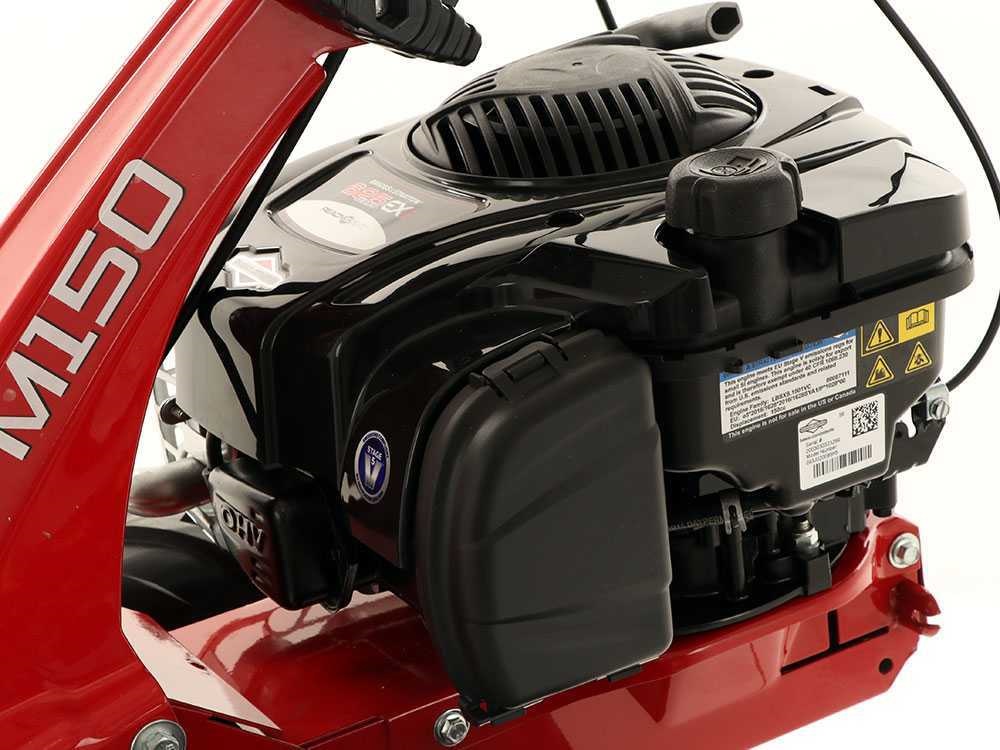
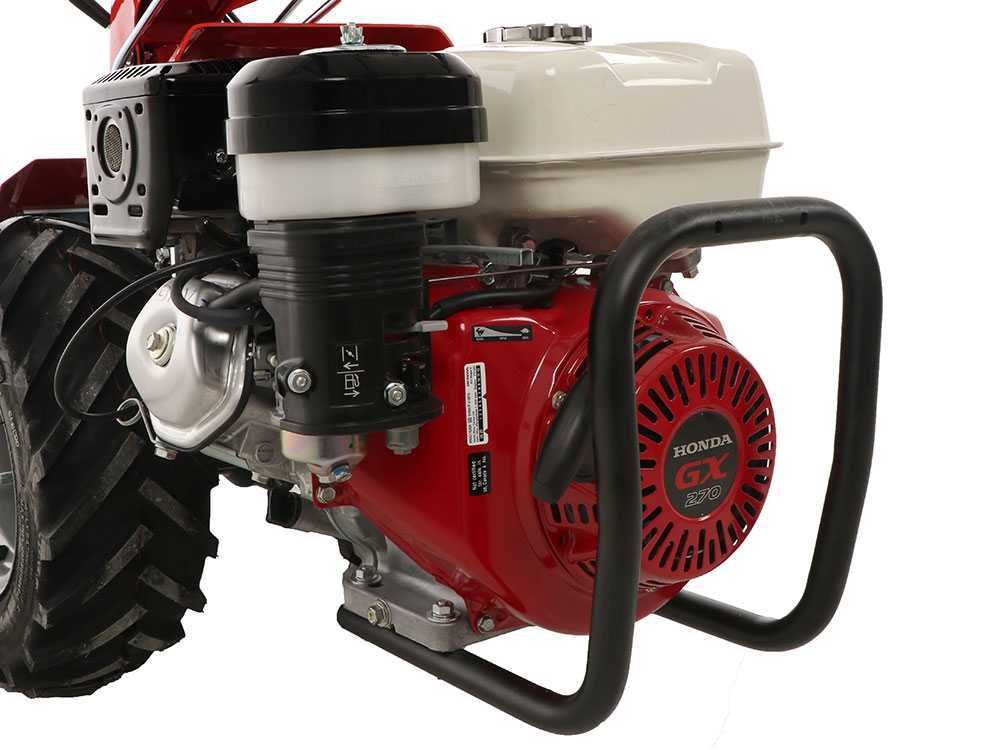
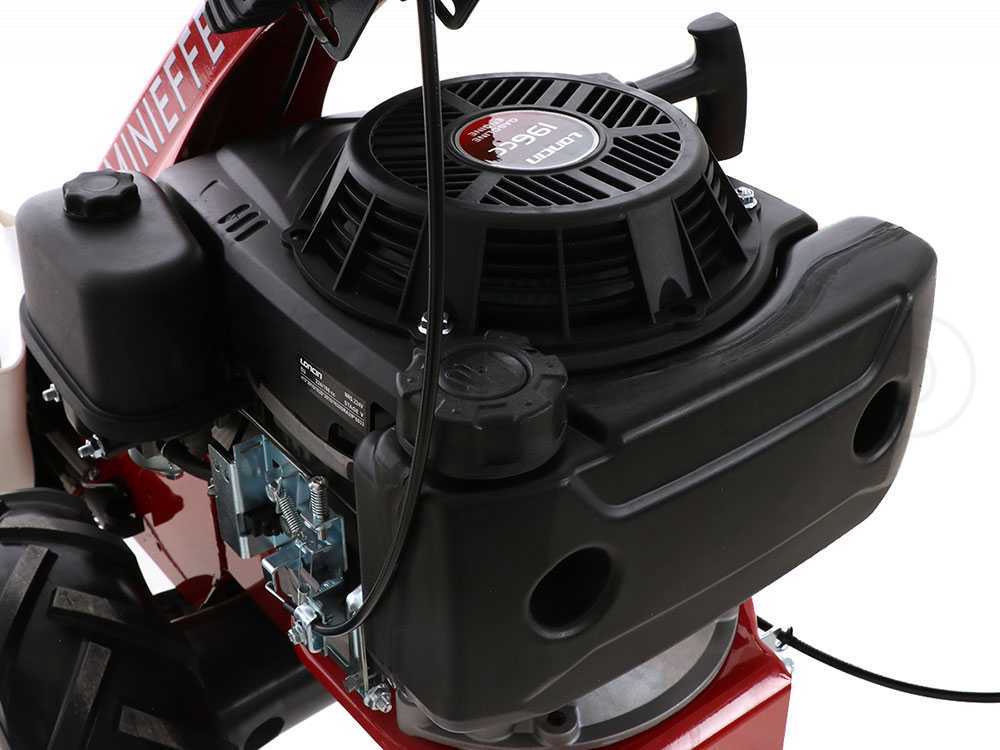
The leading brands of engines powering these type of agricultural machines are among the best alternatives on the market: Honda, for reliability and performance; Brigg&Stratton, a historic American manufacturer; and Loncin, a Chinese engine but one that provides reliable performance and excellent value for money.
| Cubic capacity | Nominal Power | |
| B&S | 120 – 190 cc | 3.5 – 6.5 HP |
| Honda | 160 – 200 cc | 5.5 – 6.5 HP |
| Loncin | 140 – 270 cc | 4.5 – 9.5 HP |




